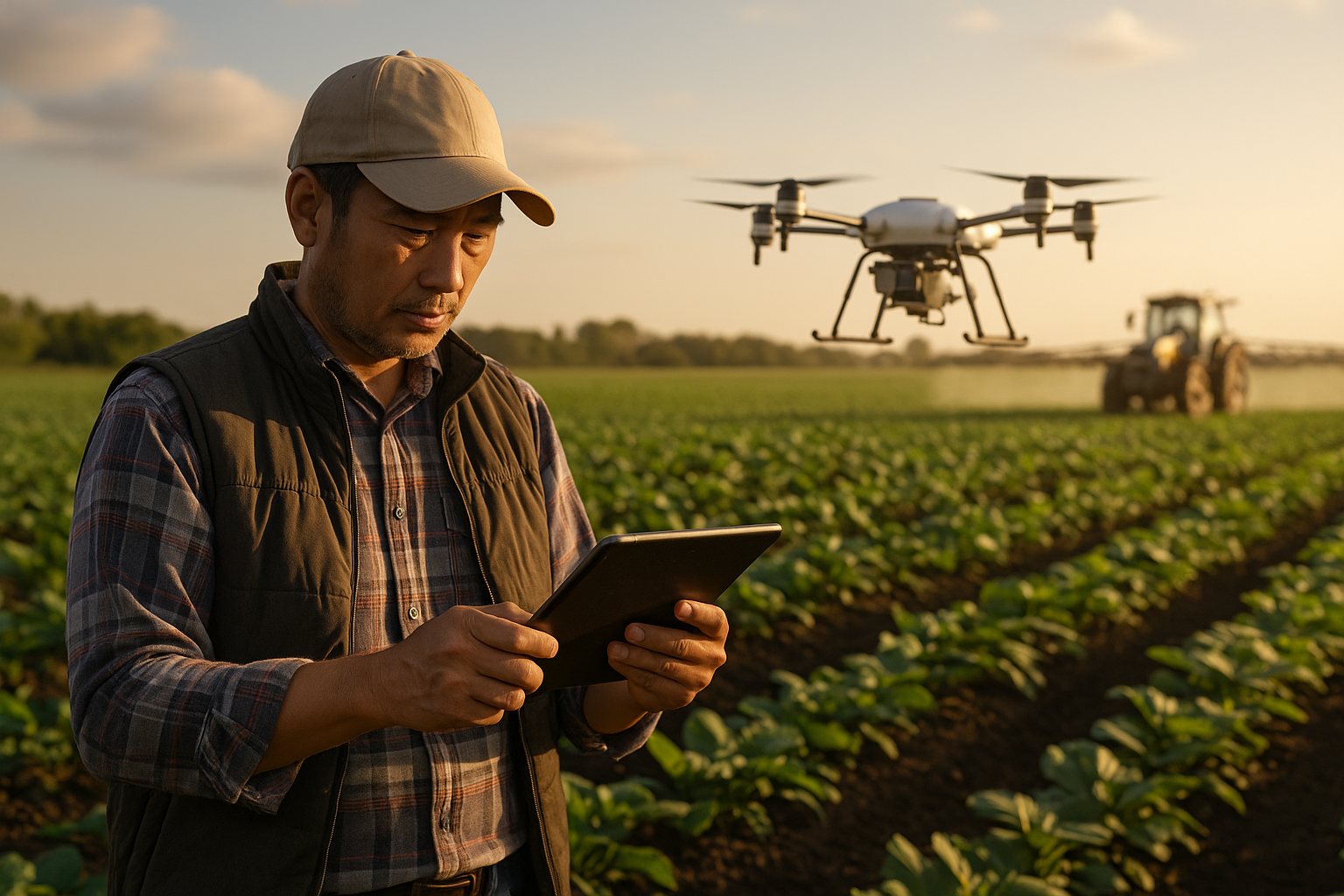China leads global shift in smart agriculture
The study documents a dramatic rise in research output since 2010, with publication volumes peaking at 344 in 2024, up from just 49 in 2010. This surge corresponds with global urgency around climate adaptation, food security, and digital innovation. The first quarter of 2025 alone recorded 82 publications, likely an underestimate due to indexing delays.

A bibliometric analysis published in Agriculture titled "Smart Agriculture and Technological Innovation: A Bibliometric Perspective on Digital Transformation and Sustainability" maps the explosive growth of digital agriculture research from 1979 to 2025. The study investigates global trends, key collaborations, and the evolving architecture of research on technological progress in agriculture.
Using Web of Science data and advanced bibliometric tools, the study identifies dominant players, emerging themes, and the structural dynamics of global research on smart farming.
How has research on agricultural technology progressed over time?
The study documents a dramatic rise in research output since 2010, with publication volumes peaking at 344 in 2024, up from just 49 in 2010. This surge corresponds with global urgency around climate adaptation, food security, and digital innovation. The first quarter of 2025 alone recorded 82 publications, likely an underestimate due to indexing delays.
The analysis reveals a strong focus on advanced technologies such as artificial intelligence (AI), Internet of Things (IoT), drones, robotics, and CRISPR-based gene editing. Precision agriculture, a central pillar of this transformation, is shown to improve yields by 10–15%, while reducing water and fertilizer use by up to 30% and 20%, respectively. CRISPR technologies, for instance, are credited with developing heat- and drought-resistant crops, with the CRISPR market projected to grow from USD 2.94 billion in 2022 to over USD 12 billion by 2030.
The study also tracks the evolution of agriculture from manual labor and mechanization (Agriculture 1.0 and 2.0) to the current paradigm of smart, autonomous systems (Agriculture 5.0). It emphasizes how this transition supports both economic efficiency and climate resilience through innovations like AI-enabled drone mapping and automated irrigation.
What are the core themes and who is leading the research?
Through keyword co-occurrence and network analysis, six thematic clusters emerged:
- Smart and Sustainable Agriculture: Emphasizes AI, sensors, and policy frameworks aimed at sustainable development.
- Productivity and Efficiency: Focuses on technical efficiency metrics using econometric models such as the Malmquist Index and DEA.
- Climate and Environmental Impact: Explores how technology addresses climate change, food security, and emissions.
- Energy and Emissions: Investigates renewable energy use and carbon mitigation in agriculture.
- Macroeconomic and Structural Change: Connects technology with labor dynamics, urbanization, and trade.
- Farm-Level Applications: Studies yield optimization and determinant factors at the micro level.
Leading authors include Liu Jianxu, Rahman Sanzidur, and Shen Zhiyang, each with five publications. Rahman notably has the highest citation count (238), indicating significant influence. Their work spans from AI-enabled agricultural models to sustainability policy. The co-authorship network reveals a core of interconnected scholars, especially those from Chinese institutions, but also highlights some fragmentation among international authors.
Despite high-impact outputs, the study points to significant gaps in long-term evaluations, cost-benefit analyses, and the adaptation of these technologies for smallholder farms. Issues like the digital divide, cybersecurity, and regulatory lag also remain underexplored.
Which institutions and countries are driving global collaboration?
China dominates both in research volume and collaborative centrality. The Chinese Academy of Sciences leads with 13 publications, followed closely by Beijing Institute of Technology and Sichuan Agricultural University, whose research impact is amplified by high citation rates.
European institutions like Wageningen University also play pivotal roles, particularly in cross-regional projects, while newer nodes like Shandong University of Finance and Economics bring an economic policy lens to the discourse. However, institutions such as Nanjing Agricultural University, despite notable publication volumes, are underrepresented in collaborative maps due to weaker co-authorship ties.
At the national level, China, the United States, and Australia are the central hubs of innovation and international cooperation. China maintains the most extensive network, partnering actively with countries like Iran, Lithuania, and Canada. The U.S. and Australia also lead in digital and AI-driven agricultural research. Europe, though fragmented, remains active through regional networks. Emerging economies such as Brazil, India, and South Africa are expanding their scientific footprint, increasingly participating in global platforms.
Despite this momentum, regions such as Africa and parts of Southeast Asia show limited collaborative integration, suggesting an urgent need for inclusive strategies that bridge global innovation gaps.
- FIRST PUBLISHED IN:
- Devdiscourse










